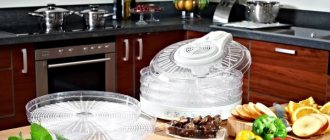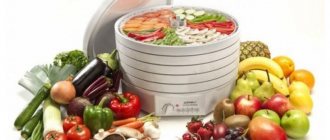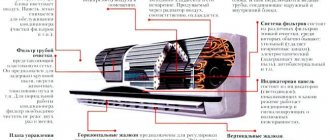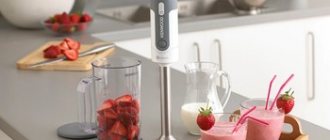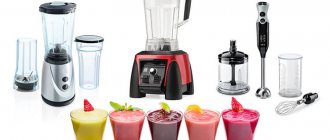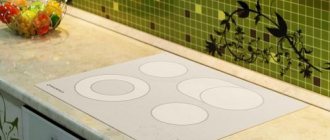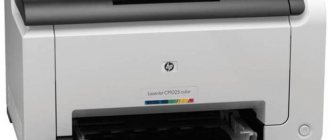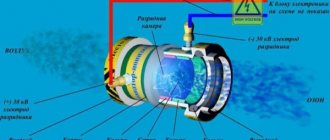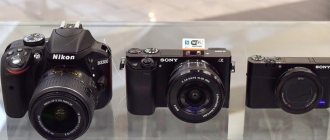The culture of healthy eating continues to develop - more and more people of different age categories are giving up junk food. Proper cooking is in fashion today, so people pay attention to special household appliances that allow them to create healthy and tasty dishes. Drying is one of the food processing methods that allows you to preserve valuable substances in food and prepare food in advance. This way you can prepare fruits, vegetables, meat - using a dehydrator. Here's what user Marishka writes:
Mariska
“Hi! My mother-in-law and I (I gave it to her) have Sukhovey dryers for 5 pallets. Both I and my mother-in-law are very pleased with the drying. I don’t know what exactly my mother-in-law is drying. I dry vegetables (carrots, parsley, onions), mushrooms are great!!”
A dehydrator is often called a dryer, since the operating principle of these devices is the same. But there are significant differences. A dehydrator can use a low temperature of 40 ° C, while a dryer can only use hot air. The first distributes the heat evenly, and in the dryer it usually comes from the bottom, so pieces of food on the lower trays can burn. It is impossible to preserve enzymes and other beneficial substances of some types of foods at such high temperatures, so a dehydrator is preferable.
If you want to use this miracle technology, it is important to pay attention to a number of features of a food dehydrator when purchasing - devices can differ significantly from each other.
Principle of operation
To understand what exactly to look for when choosing a dehydrator for vegetables and fruits, it is good to learn more about the operating principle of the device. The device heats the air inside a closed chamber, which circulates, drying pre-prepared products. The dehydrator dryer consists of the following main parts:
- housings;
- heating element
- fan;
- temperature sensor.
The heating intensity of the air flow is adjustable. For this purpose, there is a control panel on the case. Vegetables, fruits, mushrooms or other products are pre-cut (into slices, slices, strips) and laid out on pallets in the form of a mesh that allows air flow to pass through. The operating temperature range of the device is from 35 to 70°C.
Some of the latest dehydrators are characterized by a cubic shape, more uniform heating and increased volume, which allows you to prepare considerable supplies of food. Round and compact devices are designed for drying small quantities of food. The cost of popular models is presented below (prices in different regions and stores may vary significantly):
| Name | price, rub. |
| Katrina Samobranka | 850 |
| Sukhovey M8 | 1850 |
| BelOMO 8360 | 3170 |
| VolTera Lux 1000 | 6900 |
| Summer resident-4 | 8450 |
| EzidriSnackmaker FD 500 | 11700 |
| Ezidri Ultra FD 1000 | 16200 |
The more functions and modes, the correspondingly more expensive the equipment. Some dehydrators have a whole list of special programs, a humidity sensor and other devices.
Ultra-budget dehydrator Sukhovey MP-8
The Agroplast plant did not stand aside, releasing its own version of the fruit dehydrator. The product, called Sukhovey, turned out to be inexpensive and practical. Sukhovey copes well even with large volumes of products, keeping fruits and vegetables in proper condition.
| Heating element power | 0.5 kW |
| Pallets | 8 pieces, food grade plastic |
| Housing material | plastic |
| Manufacturer | Russia |
| Control | Mechanical thermostat |
| Possibility to increase the number of pallets | Yes, up to 15 pieces |
| Maximum temperature | 60 degrees |
Reviews
Despite the extra-budget cost, Sukhovey is assembled from high-quality materials and the assembly itself is distinguished by its quality. Also, this is perhaps the only device with a vertical layout that has 8 pallets right out of the box.
pros
- Large pallet capacity
- No noticeable noise during operation
- Easy to use
- Low cost
- 8 pallets included
Minuses
- There is no switch on the dryer body
- Timer missing
- The pastille tray is missing
Material
A fruit and vegetable dehydrator is made of plastic and/or metal. This determines the performance of the equipment.
In inexpensive models, the body and trays are made of plastic. This material has its advantages - it is easy to care for and is not afraid of moisture. But, according to reviews of dehydrators, models with trays made of cheap plastic become of little use after a couple of years of intensive use. Surfaces crack and grilles break. If the plastic is of high quality, then the pallets are usually quite strong and durable - they can last about 10 years or even more. Such materials are used in devices in the mid-price segment.
Ensure that all internal plastic components are food grade and BPA free. It is believed that during the heating process, toxic substances can be released into the environment and enter products. Good plastic should not have a specific smell, and equipment should have environmental and other certificates.
High quality dehydrators are supplied with stainless steel trays. Metal pallets are durable, practical, and last for several decades. When heated, they do not release toxins and are easy to care for. When purchasing, make sure that there are no defects or scratches on the metal surfaces, otherwise rust may form in these places.
How to use a dryer correctly
Despite the ease of use, each device has its own operating rules. For example, not all products can be placed whole - only some vegetables can be placed without cutting. The berries are also, as a rule, laid whole. But the fruit will have to be cut into slices or randomly, on a whim.
We recommend reading → Sous Vide or Sous Vide: technology for preparing gourmet dishes
Preparing for drying
Before drying, fruits and vegetables must be washed under running water and dried with a paper towel - this will reduce the time required for drying. With berries, this operation should be performed with caution - after all, no one wants to end up with dried mess.
Never neglect wiping the fruit!
Drying
The drying process itself does not require additional user intervention - only in some cases it is necessary to rearrange the trays for uniform drying.
More detailed instructions about the process are in the brochure supplied with the product - each product is dried for a certain amount of time, over-drying will destroy all the vitamin value, and under-drying can cause mold. That is why always follow the instructions.
Cleaning and Storing the Dehydrator
The cleaning process is no different from standard dishwashing - the only difference is that the trays need to cool before being immersed in water. No matter how durable the plastic or metal is, over time sudden changes can cause an unpleasant type of damage - cracks. To avoid their occurrence, always cool the device before washing. It is best to ventilate the motor part, wipe it with a dry cloth and store it already cooled.
Fan location
The dehydrator for drying fruits and vegetables is equipped with a fan built into the chamber. The element can be bottom, top or located on the back wall.
In premium (expensive) segment models, the fan is usually side-mounted. This helps distribute heated air evenly throughout the chamber. You can watch the drying process through the transparent front door. The flow of warm air from the side (vertical) fan is cut by trays located perpendicularly and processes the products evenly. This principle is used in professional equipment - which is used to dry fruits and vegetables on an industrial scale.
The top position of the fan is rare. Such models cost more. If the fan is located at the bottom, moisture, juice, and pieces of food may fall on it. Therefore, after each cooking process, the fan will have to be thoroughly washed. The flow, rising upward, loses temperature on each tier, so products dry faster on the lower trays.
Models with horizontal fans are suitable for drying small quantities of food. The corresponding blanks can be laid out on different tiers. If products require high processing temperatures, they are placed closer to the fan.
Which is better: a dehydrator or a dryer for vegetables and fruits?
If we compare dryers and dehydrators according to the main parameters, it will become obvious that the latter can provide better processing and, moreover, do not have a harmful effect on the human body. But their disadvantage is the increased price.
Budget dryers allow you to wither rather than dry food
Dryers are inexpensive and accessible to everyone, and are also available in a wider range. However, when purchasing such a unit, you need to take into account that it will not be able to provide truly high-quality processing.
It is worth purchasing a more expensive dehydrator if:
- you will often need to process vegetables and fruits in significant quantities;
- it is necessary to set the exact temperature, for example, to preserve vitamin C in the finished pieces, which is quickly destroyed during intensive heat treatment.
If you only need to use the device from time to time, for small portions of food, and quality is not of fundamental importance, you can buy an inexpensive dryer. It will help evaporate most of the moisture from fruits and vegetables, even if they remain slightly damp on the inside.
Conventional or infrared heating element
There has been an increased interest among buyers in infrared dehydrators. Some models have such a heating element as an addition to the main one. It is believed that infrared radiation has a beneficial effect on food quality and human health, although there is little verified data on this. These rays heat fruits and vegetables much like the sun does.
The infrared emitter heats the food, but not the air inside the chamber, so it is believed that IR heating is more economical. But the cost of a dehydrator with an infrared heating element is higher than that of models without it. But the user can choose whether to dry their products “in the shade” or “in the sun” by turning the IR emitter on and off.
Dehydrator or dryer - are there any differences?
A regular electric dryer is another kitchen appliance that is used for the same purpose. This is a kind of forerunner of the dehydrator. And although two types of devices can be found on the market today, the advantages of modern “moisture removers” are obvious.
In dryers, an approximate temperature is set, and when using dehydrators with a built-in thermostat, you can set the mode that is optimal specifically for the product being processed. For example, for greens - 30-35 degrees, for vegetables - 45-55 degrees, for meat - 65-70 degrees. This way the moisture will evaporate completely, and the beneficial substances will not be damaged.
Even with a successfully set temperature setting, the air in the dryer heats up unevenly. In addition, it inevitably cools down as it circulates inside the chamber. This means that if there are several pallets (trays), drying will be carried out to varying degrees. In a dehydrator, air flows simultaneously penetrate the entire contents of the chamber, so moisture is removed from the product with the same intensity.
In a conventional dryer, due to setting the temperature “by eye”, you can get finished products that will look “correct”, but retain a certain amount of moisture inside. This means that over time, rotting processes will inevitably begin. When using a dehydrator, this is excluded - moisture is removed evenly and completely.
Simple dryers (sometimes called economy dehydrators) have only one advantage - lower price. However, this advantage is rather dubious. The fact is that the reduction in cost of such devices is achieved through the use of low-quality materials. With regular, long-term heating, they are capable of releasing downright harmful substances (since the organic acids contained in fruits and vegetables will inevitably interact with low-quality plastic). It turns out that saving in such matters may not have the best effect on health.
Another thing is modern dehydrators of well-known brands (from the New Zealand company Hydraflow (Ezidri), German Zimber, American Excalibur). Some devices are suitable even for professionals, others will be an ideal help not only when creating homemade preparations, but also as a new generation household appliance for healthy eating. But in any case, it’s not worth chasing after outright cheapness. Moreover, purchasing equipment in dubious places or from random online sellers who do not have any reputation in the market.
Total area of pallets
An important parameter that is taken into account when choosing the best dehydrator is the total area of the pallets. This indicator determines how many fruits and vegetables can be prepared at a time.
Professional models have up to 10 pallets, the area of which is from 120 cm². This technique is suitable for those who eat mainly raw foods (raw foodists) or who have a large family. Professional dehydrators are used by herbalists. They can be used to dry a large amount of plant material. If users have a large garden or vegetable garden and plan to dry crops, it is also worth choosing professional large models.
Small, inexpensive models are suitable for home use. You can dry up to 5-6 medium-sized round fruits (for example, oranges, apples) in them at a time. This is a technique that has no more than 6 shelves.
How to choose a dehydrator?
As practice shows, the most important are the following factors:
- Drying principle
- Has an adjustable thermostat and fan
- Form
- View
- Price
Dehydrator drying principle
Based on the drying principle, a distinction is made between convection and infrared dryers.
Convection - uses the circulation of heated air.
Infrared - affects water molecules with infrared radiation.
The models of IR dryers known to me are “Dachnik”, “Corvette”, “Ladoga” and - amazingly marvelous - the IR drying mat “Self-assembled tablecloth”
The advantages of infrared dryers include energy savings and additional bactericidal treatment - they say bacteria cannot tolerate infrared radiation.
I personally considered the same IR radiation to be a disadvantage... well, I don’t like exposing food to additional and unknown radiation...
In principle, IR dryers are an option to consider, and if you have positive experience of using this type of dehydrator in a raw food diet, please share your opinion in the comments.
See also: Coconut milk
Thermostat and fan in dehydrator
Having an adjustable thermostat for a raw food dehydrator, you understand, is absolutely necessary.
At temperatures above 45C, food enzymes are destroyed, and the whole idea of healthy drying loses its meaning.
All models without the ability to adjust the temperature are not included in our range of interests.
I dry everything, setting the temperature to 40C, and only for herbs I lower it to 35C.
Another important detail is the fan. Make sure that the model you choose has one, as the presence of a fan makes drying more even and prevents food from overheating.
Dehydrator shape
Dehydrators come in round and square shapes.
There are also flat infrared dryers - the already mentioned “Self-assembled tablecloth” and another innovation - the vegan “Sunstone Imitator” stove.
I didn’t consider IR dryers for myself, but to compare the characteristics of round and square dehydrators, I made the following sign:
| Square shape | Round form | |
| 1. Location of heating element and fan | On the back wall - thus, the air is heated and distributed evenly along all trays. | Most often at the bottom of the device - thus, the lower trays heat up more and to prevent this, you need to rearrange them. There are dryers with top heating. Not all models have a fan. |
| 2.Location of pallets | Horizontal – it’s convenient to remove them and there is no need to rearrange them. | Vertical, on top of each other - to rearrange, you need to disassemble the entire structure. |
| 3.Shape of pallets | Square – increases the drying surface by 25%. It is convenient to make large square sheets of bread or marshmallows. | Round, with a hole in the middle - small drying surface, there are no suitable round silicone sheets for drying. |
| 4.Drying time and quality | The horizontal arrangement ensures uniform drying without the need to rearrange the trays. | The more trays there are, the further the top products are removed from the heating element - this increases the drying time and requires rearranging the trays. |
| 5.Use of special drying sheets | Yes. Both parchment and special silicone sheets are square in shape. | No, since the use of sheets blocks the air flow coming from below or above. |
| 6.Functionality | You can remove some of the pallets and dry bulky products and objects (especially important for needlewomen). | There is only a certain configuration that limits the drying chamber. |
| 7.Care of the device | Easy to clean - drops and crumbs fall onto the flat tray at the bottom of the dehydrator. | Difficult to clean - drops fall on parts of the heating element located below. This, by the way, can cause a breakdown. |
Perhaps I did not take into account and describe all the advantages and disadvantages of different forms. In addition, a new round dryer, Ezidri, has appeared on the market, which corrects some of the shortcomings of round dryers.
But I still preferred the square shape of the dehydrator.
Type of dehydrator
- Color – I think that white appliances look more organic in the kitchen.
- Number of pallets - the more there are, the larger the dehydrator. In a small kitchen, when literally every centimeter counts, the size of the equipment is an important factor. On the other hand, if you plan to cook a lot of food, it makes sense to take this into account. So, in my experience, bread made on three dehydrator sheets “go away”, if there are three people, during one meal.
- Material of the body and trays - it is believed that the safest plastic for contact with food is polypropylene. And also pay attention to the opacity of the case - there is no need to expose the products to additional exposure to light.
- The presence of a timer is a significant plus of the model. This way you will always be sure that the finished product is not overdried.
- Device power - the amount of energy consumption depends on this indicator. And since the dehydrator sometimes works for more than 20 hours, it is important to take this point into account.
See also: Vegetarian milk
Dehydrator price
The most popular dehydrators for raw foodists are, of course, Excalibur and Sedona - excellent, well-thought-out and wonderful devices from all sides.
But with a very steep price. If this price suits you, don’t hesitate to purchase it – with all the guarantees and other advantages.
At the same time, there are also a number of differences between these two models of dehydrators... But choosing between two very good ones, you see, is easier than finding a good one, but for less money.
As I already said, round dryers, such as “Veterok”, “Sukhovey”, “Rotor”, etc. I excluded it because of the shape. Infrared - mainly due to radiation. Square, such as “Squirrel” and “Ryzhik” due to the lack of a temperature controller, dimensions and material...
In the process of searching, I found Bioline, which was suitable in terms of functionality and cheaper, and, almost immediately, very similar and even more suitable in price, Hilton (HILTON DH-09).
The price did its job and, after thinking a little more and comparing all the pros and cons, I finally ordered Hilton. The most suitable price option was found in Ukraine - a nice dehydrator.
Control
Typically models are electronically controlled. By selecting the appropriate setting, you can set the optimal combination of processing time and intensity. The temperature is adjusted in 5°C steps, and the time is 1 hour. When the user-set time has passed, the dehydrator will turn off.
Budget models are produced without a timer. The power is regulated using a lever, which can be used to set the heating according to the “cold-hot” principle. Finding the optimal temperature here is somewhat more difficult. It's a good idea to set a timer on your phone so you don't forget to turn off the dehydrator.
Professional models have the ability to set complex programs - for example, two types of time and two types of temperatures. This allows you to speed up the drying process and process juicy fruits.
Heating Setting Accuracy
Of course, each type of product requires the use of appropriate temperatures. If you choose the wrong dehydration parameters, the food will be over-dried or under-dried. Here is an approximate table of temperatures for different workpieces:
| Type of food | Temperature, °C |
| Fruits | 56 |
| Vegetables | 51 |
| Mushrooms | 42 |
| Herbs | 35 |
| Meat or fish | 67 |
| Yogurt | 44 |
In expensive models, the temperature level may differ from the set parameter by no more than a degree. In budget dehydrators, the run-up can reach 5 degrees or more. Therefore, when choosing a model, consider what dishes you plan to cook. If equipment is purchased to prepare dried fruits, which will later be useful for compote, you can choose equipment with less precise temperature control.
If you want to cook, for example, marshmallows, meat snacks, dried fruits that do not require pre-soaking, you should choose a dehydrator with precise temperature control. The quality of dishes and the preservation of their taste depend on this.
Accessories
Additional accessories simplify the dehydration process and expand its capabilities. Often a plastic mesh with a fine mesh is supplied so that you can chop and finely chop food. It’s good when the device comes with silicone mats, which will greatly facilitate the process of preparing marshmallows. They are used for drying semi-liquid and liquid fruit and vegetable masses.
The kit may include inserts to increase the height of the pallets. This will be a good addition if you need to cook large foods. Sometimes yogurt containers come with the dehydrator. A convenient addition are silicone potholders, brushes, and other tools that can be useful to housewives when operating equipment.
Basic selection algorithm
To choose the right dehydrator model, there are several things to consider. Before purchasing, try to answer a few questions:
- How often will the dehydrator be used? If you need equipment for preparing dried fruits or drying mushrooms several times a year, an inexpensive model with a simple control mechanism is suitable. If the equipment will be used frequently, it is better to buy a more complex model with a wide range of capabilities and programs.
- Do you want to cook “complicated” dishes? Meat and fish snacks, marshmallows, and yoghurts are prepared in a dehydrator with precise heating control. Otherwise, the products will be overdried and suitable only for making soups or compotes.
- Are additional accessories needed and what? If the kit does not include special material for preparing marshmallows or a net for small products, purchasing them for a specific model will be quite difficult, and sometimes impossible.
- Will you control the drying process? If your equipment does not have a timer, you should not leave the house until dehydration is complete. It is advisable not to leave the kitchen and constantly monitor how the drying is progressing. If the model does not have a timer, it may turn out that it is time for you to leave the house, but the food is not yet dry. Therefore, the automatic shut-off feature is one of the important programs of any dehydrator.
Having assessed the volume and range of products that you plan to dry in the device, it is easy to determine the appropriate model. A dehydrator will be a good helper in preparing tasty, healthy food.
